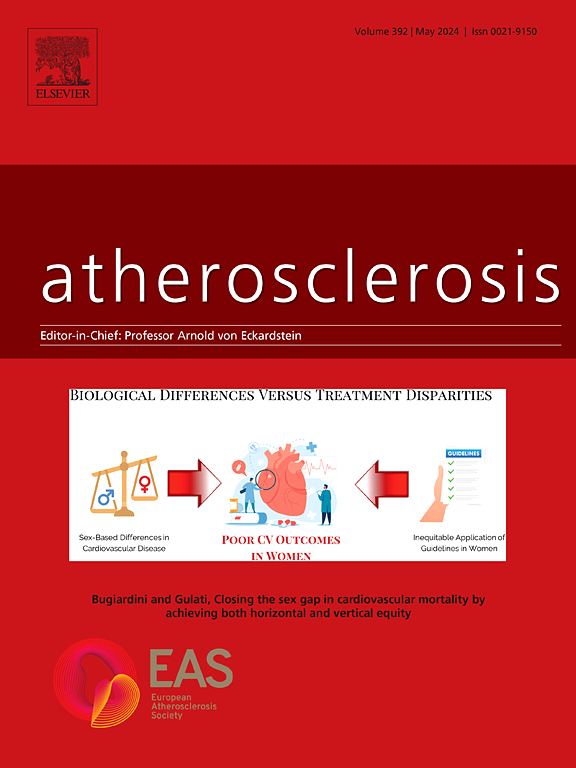The emerging role of glycans and the importance of sialylation in cardiovascular disease
IF 4.9
2区 医学
Q1 CARDIAC & CARDIOVASCULAR SYSTEMS
引用次数: 0
Abstract
Glycosylation is the process by which glycans (i.e. ‘sugars’) are enzymatically attached to proteins or lipids to form glycoconjugates. Growing evidence points to glycosylation playing a central role in atherosclerosis. Glycosylation occurs in all human cells and post-translationally modifies many signalling molecules that regulate cardiovascular disease, affecting their binding and function. Glycoconjugates are present in abundance on the vascular endothelium and on circulating lipoproteins, both of which have well-established roles in atherosclerotic plaque development. Sialic acid is a major regulator of glycan function and therefore the process of sialylation, in which sialic acid is added to glycans, is likely to be entwined in any regulation of atherosclerosis. Glycans and sialylation regulators have the potential to present as new biomarkers that predict atherosclerotic disease or as targets for pharmacological intervention, as well as providing insights into novel cardiovascular mechanisms. Moreover, the asialoglycoprotein receptor 1 (ASGR1), a glycan receptor, is emerging as an exciting new regulator of lipid metabolism and coronary artery disease. This review summarises the latest advances in the growing body of evidence that supports an important role for glycosylation and sialylation in the regulation of atherosclerosis.

甘聚糖的新作用和唾液酰化在心血管疾病中的重要性
糖基化是聚糖(即“糖”)通过酶作用附着在蛋白质或脂质上形成糖缀合物的过程。越来越多的证据表明,糖基化在动脉粥样硬化中起着核心作用。糖基化发生在所有人类细胞中,并在翻译后修饰许多调节心血管疾病的信号分子,影响它们的结合和功能。糖缀合物大量存在于血管内皮和循环脂蛋白中,两者在动脉粥样硬化斑块的形成中都有明确的作用。唾液酸是聚糖功能的主要调节剂,因此唾液化过程,即唾液酸被添加到聚糖中,可能与动脉粥样硬化的任何调节交织在一起。聚糖和唾液化调节剂有潜力作为预测动脉粥样硬化疾病的新生物标志物或作为药物干预的靶点,以及为新的心血管机制提供见解。此外,asialal糖蛋白受体1 (ASGR1)作为一种聚糖受体,正在成为脂质代谢和冠状动脉疾病的令人兴奋的新调节剂。这篇综述总结了越来越多的证据支持糖基化和唾液化在动脉粥样硬化调节中的重要作用的最新进展。
本文章由计算机程序翻译,如有差异,请以英文原文为准。
求助全文
约1分钟内获得全文
求助全文
来源期刊

Atherosclerosis
医学-外周血管病
CiteScore
9.80
自引率
3.80%
发文量
1269
审稿时长
36 days
期刊介绍:
Atherosclerosis has an open access mirror journal Atherosclerosis: X, sharing the same aims and scope, editorial team, submission system and rigorous peer review.
Atherosclerosis brings together, from all sources, papers concerned with investigation on atherosclerosis, its risk factors and clinical manifestations. Atherosclerosis covers basic and translational, clinical and population research approaches to arterial and vascular biology and disease, as well as their risk factors including: disturbances of lipid and lipoprotein metabolism, diabetes and hypertension, thrombosis, and inflammation. The Editors are interested in original or review papers dealing with the pathogenesis, environmental, genetic and epigenetic basis, diagnosis or treatment of atherosclerosis and related diseases as well as their risk factors.
 求助内容:
求助内容: 应助结果提醒方式:
应助结果提醒方式:


